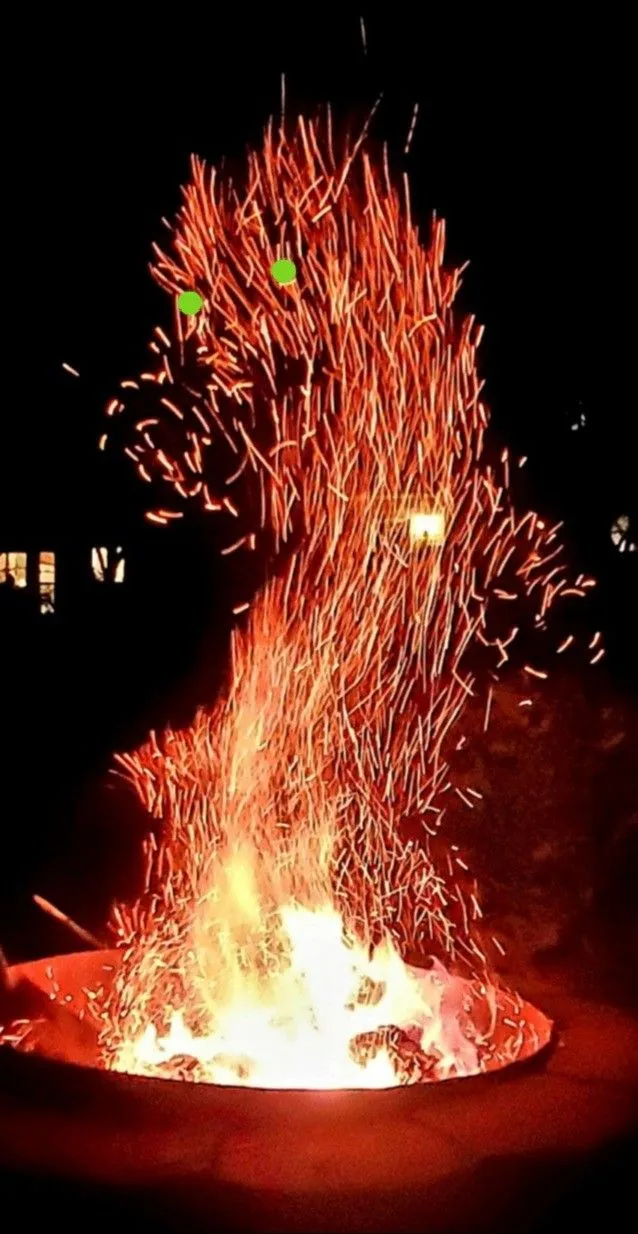What is a Bonfire Tarantula (and Why Get One?)
The Bonfire Tarantula, scientifically known as Hapalopus sp. Columbia, is a captivating species, gaining popularity among tarantula enthusiasts, especially beginners. Their striking coloration, typically featuring vibrant reds, oranges, and blacks, gives them their common name. Unlike some other tarantula species, Bonfire Tarantulas are relatively small, reaching a maximum leg span of around 3-4 inches, making them manageable for novice keepers. The appeal of this species lies not only in their beauty but also in their generally docile temperament and ease of care compared to some more demanding species. Their manageable size also makes them a good choice for those with limited space. Bonfire Tarantulas offer a fascinating opportunity to observe tarantula behavior and learn about their unique needs, making them an excellent choice for someone looking to get into the hobby.
Bonfire Tarantula Appearance and Characteristics
Bonfire Tarantulas are known for their stunning appearance. They typically exhibit a combination of red, orange, and black coloration, which intensifies with each molt. The vivid colors are a major draw for enthusiasts. The carapace, legs, and abdomen display a mosaic of these colors, creating a fiery effect, thus giving them the name. Beyond their aesthetic appeal, these tarantulas have distinct physical features. They possess four pairs of legs and two pedipalps (small leg-like appendages near the mouth) used for sensory purposes and manipulating food. Bonfire Tarantulas also have fangs, used to inject venom into their prey. The overall body structure is robust, and their size is relatively small, typically 3-4 inches in leg span. The males and females exhibit similar coloring, although adult males often have a more slender build.
Bonfire Tarantula Habitat Essentials

Creating the right habitat is crucial for the health and well-being of your Bonfire Tarantula. Their natural environment is essential to replicate in captivity. They thrive in a secure and stable environment, with particular attention given to the enclosure, substrate, and decor. A well-designed habitat not only provides a comfortable space for the tarantula to thrive but also allows you to observe their natural behaviors. Ensuring the correct temperature, humidity, and overall environment will help your Bonfire Tarantula to live a long and healthy life. This involves choosing the right enclosure size, providing an appropriate substrate for burrowing, and offering a selection of decorations that will make them feel secure.
Choosing the Right Enclosure
The enclosure is the foundation of your Bonfire Tarantula’s habitat. For a juvenile Bonfire Tarantula, a small, secure container is sufficient. As they grow, you will need to upgrade to a larger enclosure to accommodate their increasing size. A good rule of thumb is to provide a space that is at least three times the tarantula’s leg span in length and width. The enclosure should have a secure lid to prevent escape and proper ventilation to maintain air quality and prevent the buildup of harmful humidity. Glass or clear plastic enclosures are popular choices, as they allow for easy observation of the tarantula. Consider enclosures with front-opening doors for easier access during feeding and maintenance.
Substrate and Decor Considerations
The substrate is the material that forms the bottom layer of the enclosure. For Bonfire Tarantulas, a substrate that allows them to burrow is essential. A mix of coconut fiber, peat moss, and a small amount of vermiculite is ideal. This combination retains moisture while allowing for burrowing and providing a natural feel for the tarantula. The substrate depth should be sufficient to allow them to create burrows and feel secure. You should add decorations, such as cork bark, artificial plants, or other safe hiding places, to provide a sense of security and enrich their environment. These decorations help the tarantula feel safe and promote natural behaviors. Proper substrate and decor contribute significantly to your Bonfire Tarantula’s comfort and overall well-being.
Bonfire Tarantula Feeding Guide

Feeding your Bonfire Tarantula the right food is vital for its growth, health, and overall well-being. These spiders have specific dietary requirements, so understanding what to feed them and how often is crucial for proper care. You’ll also need to know how to provide fresh water and maintain appropriate humidity levels to ensure your tarantula remains healthy and active. A well-fed Bonfire Tarantula will display vibrant colors and exhibit natural behaviors. Moreover, it will be more resistant to illness and live a longer life. Paying close attention to their appetite and feeding habits also lets you monitor their health and quickly detect any potential issues. Always consider their feeding habits and change any habits according to their current needs.
What and How Often to Feed
Bonfire Tarantulas are insectivores, meaning their diet primarily consists of insects. Suitable food options include crickets, mealworms, dubia roaches, and other commercially available insects. The size of the prey should match the size of the tarantula. As a general guideline, the prey should not be larger than the tarantula’s body. For juveniles, feed 2-3 times a week, while adults can be fed once or twice a week. Remove any uneaten prey within 24 hours to prevent stress to the tarantula and maintain a clean enclosure. Offering a variety of insects will also help to ensure that your Bonfire Tarantula receives a balanced diet and avoids any nutritional deficiencies.
Water and Humidity Requirements
Providing a constant supply of fresh water is essential. You can use a shallow water dish or a bottle cap filled with water. Ensure the water dish is always clean and easily accessible. Bonfire Tarantulas also require a specific humidity level in their enclosure to thrive. This can be achieved by misting the enclosure periodically, depending on the humidity needs of the species. Using a hygrometer to monitor the humidity levels is helpful. Maintaining the proper humidity is important for healthy molting and overall well-being. Avoid excessive humidity, which can lead to mold growth and other health problems. The ideal humidity range for Bonfire Tarantulas is usually between 60-70%.
Bonfire Tarantula Handling and Safety

Handling Bonfire Tarantulas is generally discouraged, particularly for beginner keepers, as it can be risky for both the tarantula and the handler. While they are not considered highly defensive, they can still bite, and their venom, while not lethal to humans, can cause localized pain, swelling, and discomfort. Furthermore, handling can stress the tarantula, potentially impacting its health. Prioritizing the well-being of the tarantula and the handler is crucial. If handling is necessary, it should be done with extreme care and only by experienced keepers. Always approach handling with caution, respect, and a thorough understanding of the risks involved. The best way to interact with a Bonfire Tarantula is by observing it in its enclosure and providing a suitable environment where it can thrive undisturbed.
Handling Considerations
If you must handle a Bonfire Tarantula, do it on a soft surface, close to the ground, to minimize the risk of injury if it falls. Gently coax the tarantula onto your hand, avoiding sudden movements that might startle it. Never handle a tarantula if it appears agitated, defensive, or in a pre-molt state. Use a soft brush to gently guide the spider. Avoid placing your hand directly in front of the tarantula, as this can be seen as a threat. Wash your hands thoroughly before and after handling, as the tarantula’s urticating hairs can cause skin irritation. Be patient and gentle, and recognize that handling can be stressful for the spider, so it should be kept to a minimum.
Potential Risks and Precautions
The primary risk associated with handling a Bonfire Tarantula is the possibility of a bite. While the venom is not lethal to humans, it can cause pain, swelling, and other localized symptoms. Allergic reactions are possible. The tarantula might also release urticating hairs, which can cause skin and eye irritation. Always avoid direct contact with the spider’s fangs and hairs. Make sure you are aware of any allergic reactions you might have, and seek immediate medical attention if needed. Have a safe plan in place for managing a potential bite, and avoid any handling that could put you or the tarantula at risk.
Common Health Issues and Preventative Care

Preventative care is essential to ensure that your Bonfire Tarantula remains healthy and thrives. Understanding the common health issues tarantulas face and knowing how to address them can help you be a responsible and caring keeper. Providing the right environment, proper nutrition, and avoiding unnecessary handling are crucial preventative measures. Regular observation of your tarantula’s behavior, appetite, and overall appearance is also vital for early detection of any potential health problems. Preventative care extends to providing the best possible habitat and care to reduce stress and the risk of illnesses.
Recognizing and Addressing Illness
Common health issues in Bonfire Tarantulas include parasites, fungal infections, and injuries. Parasites can be introduced through live food, so ensure you buy from a reliable source or quarantine the feeders. Fungal infections can occur if humidity is too high, so make sure you maintain the correct humidity levels. Watch for signs of illness such as lethargy, loss of appetite, or unusual behavior. If you suspect a health issue, isolate the tarantula and consult with a veterinarian experienced with exotic animals. If your tarantula is injured, gently clean the wound and provide a sterile environment to promote healing. Prompt intervention can significantly improve your tarantula’s chances of a full recovery.
Molting Process and What to Expect
Molting is a natural process where tarantulas shed their exoskeletons to grow. Bonfire Tarantulas, like all tarantulas, undergo this process periodically. Preparing for and understanding the molting process is crucial for tarantula keepers. During molting, the tarantula may become inactive, lose its appetite, and develop a dull appearance. The tarantula will lie on its back, and the exoskeleton will split, allowing the tarantula to emerge. This process can take several hours. After molting, the tarantula’s new exoskeleton is soft and vulnerable. Avoid disturbing the tarantula during this time, and do not feed it until its fangs have hardened. A successful molt indicates a healthy tarantula.
Conclusion

Caring for a Bonfire Tarantula can be a rewarding experience for both beginner and experienced keepers. Their striking beauty, manageable size, and relatively docile nature make them excellent pets. By providing the right habitat, proper nutrition, and understanding their specific needs, you can create a thriving environment for your tarantula. Always prioritize your spider’s health and well-being, and be patient and observant. The joy of observing a Bonfire Tarantula’s behavior, watching it molt, and seeing its vibrant colors is an enriching aspect of the hobby. With the right knowledge and dedication, you can enjoy the unique experience of owning a beautiful Bonfire Tarantula and contribute to its long and healthy life.
